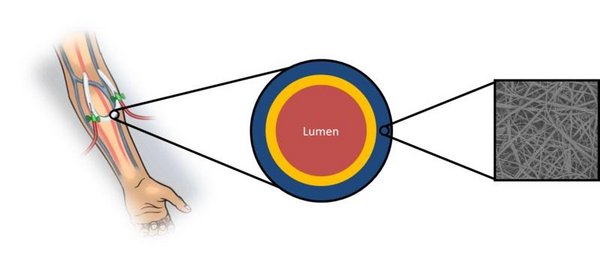
Description
In the Netherlands 6500 patients with renal failure require frequent hemodialysis. When use of autologous material is not an option, synthetic materials are used to create an access graft for dialysis. Currently used access grafts show a lower prolonged patency after implantation than autologous grafts, mostly due to thrombosis and underlying neointimal hyperplasia. In our project we aim to design an in situ tissue engineered vascular access graft that has minimum thrombogenicity, and is suitable for prolonged vascular access. For this design we will make use of the modular and highly flexible properties of supramolecular polymers to be able to tune the bioactive and fouling properties of the materials.
The ideal non-thrombogenic structure is the endogenous endothelium. Therefore we aim to create a luminal side of the graft that allows for specific cell adhesion, but is also minimally thrombogenic up until a confluent endothelium can be formed. The desired starting material therefore would be non-fouling. Supramolecular polymer forming subunits could be functionalized with for instance polyethylene glycol (PEG) to create a non-fouling material. Incorporation of biomolecules could then result in a tunable bioactive base. New graft designs will be tested for protein adsorption, platelet and cell adhesion, under static and physiologic hemodynamic conditions in a meso- and macrofluidic setup.
Researchers
Researcher: B.D. (Bastiaan) Ippel.
Supervisors: P.Y.W. (Patricia) Dankers, C.V.C. (Carlijn) Bouten.
Funded by ZonMW.
Interesting Links
Contact
-
Maartje ÖzcanJaylinn FurdaLopesring7722LG Oost-Graftdijk
-
ds. Ravi van Luin Bds. Arie van de Velde Mscvan de Poldreef6085EX Roderesch
-
Bradley DriessenBilal Woltersvon Heinrich d'Omóróviczasingel5171GH Soerendonk
